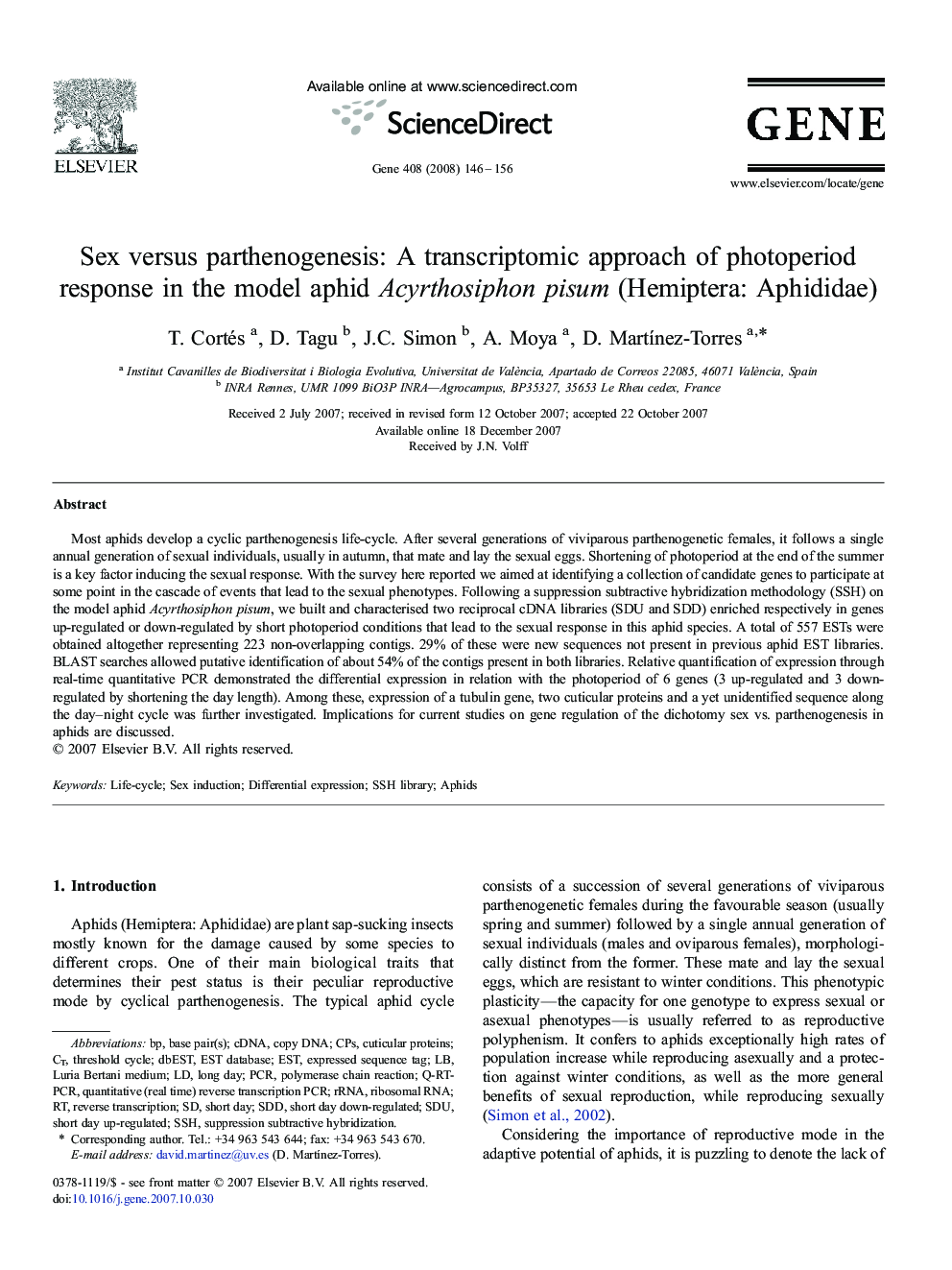| Article ID | Journal | Published Year | Pages | File Type |
|---|---|---|---|---|
| 2819386 | Gene | 2008 | 11 Pages |
Most aphids develop a cyclic parthenogenesis life-cycle. After several generations of viviparous parthenogenetic females, it follows a single annual generation of sexual individuals, usually in autumn, that mate and lay the sexual eggs. Shortening of photoperiod at the end of the summer is a key factor inducing the sexual response. With the survey here reported we aimed at identifying a collection of candidate genes to participate at some point in the cascade of events that lead to the sexual phenotypes. Following a suppression subtractive hybridization methodology (SSH) on the model aphid Acyrthosiphon pisum, we built and characterised two reciprocal cDNA libraries (SDU and SDD) enriched respectively in genes up-regulated or down-regulated by short photoperiod conditions that lead to the sexual response in this aphid species. A total of 557 ESTs were obtained altogether representing 223 non-overlapping contigs. 29% of these were new sequences not present in previous aphid EST libraries. BLAST searches allowed putative identification of about 54% of the contigs present in both libraries. Relative quantification of expression through real-time quantitative PCR demonstrated the differential expression in relation with the photoperiod of 6 genes (3 up-regulated and 3 down-regulated by shortening the day length). Among these, expression of a tubulin gene, two cuticular proteins and a yet unidentified sequence along the day–night cycle was further investigated. Implications for current studies on gene regulation of the dichotomy sex vs. parthenogenesis in aphids are discussed.
